
FAQs
Need
Why is this development needed?
Junction 13 of the M6 motorway is a prime location for businesses that are reliant on access to the country’s strategic infrastructure network ensuring that the products that people and businesses need are in the right place at the right time. Location and quality of space is crucial to supporting the needs of growing and established businesses that make an important contribution towards the local, regional and national economy.
The site’s close proximity to Stafford and Penkridge, with good public transport links, means the site is accessible to a large workforce. This is not only highly desirable to future occupiers to help support the efficiency of their operations, but will also have significant local economic benefits in the form of new jobs across a wide range of skill levels and training opportunities.
There is significant demand from companies for modern, energy-efficient employment space within the region. This is driven by a range of factors such as increased online shopping and changes in consumer behaviour, higher freight flows, and Brexit and Covid-19 induced changes, such as the practice of ‘nearshoring’, where businesses bring larger elements of their operation back to the UK.
The Industrial and Logistics sector supports the functioning of our economy and the way we live our lives. The food we eat, the products and services we purchase, the materials used to build new homes and new infrastructure, even the vaccines that give us protection from Covid-19 are stored, manufactured and distributed from warehouses and factories to ‘us’, the end consumer.
The sector enables the movements of goods across a multi-modal network of road, rail, air and water routes. Most businesses draw on supply chains – many of which are global in scale – that rely upon these multiple modes of transport and on the transfer between freight nodes (such as ports, airports, rail freight interchanges and road) to warehouses and then finally onto the end customer. Without these facilities and the increasingly efficient supply chains that link them with suppliers and end customers, the delivery of our purchases would be much slower, more expensive and we would have less choice.
Addressing Impact on Local Area
How will the new buildings be screened from view?
We work hard to ensure our buildings complement and blend in with the natural environment to lessen any impact on the visual landscape.
Careful attention will be given to screening and landscaping, ensuring the new buildings respect the historic and rural characteristics of the local area and protect key views. The retention of existing woodland and extensive new planting will be used to appropriately screen the new development.
What materials and colours will be used for the new buildings?
The exact colour of the buildings would be determined at the detailed design stage. However, at this stage it is anticipated that the buildings would utilise metal cladding in graduating shades of grey (fading to a light grey at the top) to reduce perceived height and blend the surrounding landscape.
Contemporary details and full-height glazing will also be used, adding visual interest and breaking up building massing.
How will noise be mitigated?
A range of measures, such as layout design, vegetation, bunding and fencing, will ensure noise from operational areas is minimised as much as possible for local residents.
Buildings located closest to the village of Dunston will have operational areas facing away from Dunston village, ensuring there is considerable separation between local residents and the areas where vehicles will be operating.
How will the impacts of construction be managed?
St. Modwen Logistics is proud to be a Client Partner of the Considerate Constructors Scheme, which demonstrates our commitment to raising standards in the construction industry.
We are recognised by the public and those working on site as a company that places huge importance on showing care and consideration towards the local community, the environment and the welfare of the workforce.
We aim to bring a positive difference to the local community; as such, it will be vitally important to ensure the effects of construction are mitigated as far as possible.
A construction management plan will be submitted with the planning application, setting out measures to control construction vehicle arrivals, noise, and dust, among other considerations.
As a company, we maintain ownership of our buildings and Parks, meaning we place great importance on building and maintaining relationships with the local community. It is also in our interest to ensure these Parks and their grounds remain attractive and maintained throughout.
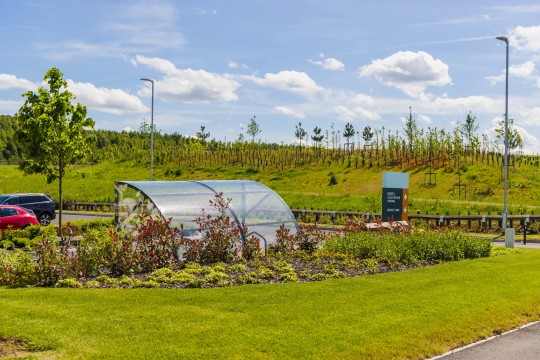
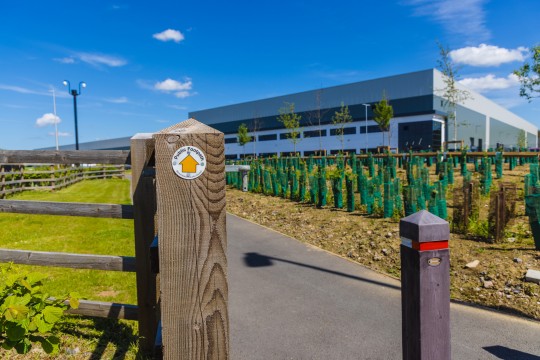
Sustainability
How energy efficient will the new buildings be?
Sustainability is at the heart of all our developments and is underpinned by our Swan Standard and Energy Code guidelines; this means reducing carbon emissions and maximising energy efficiency will be a focus from construction through to operation.
- New buildings will be thermally efficient and employ intelligent lighting systems to harness natural daylight, minimise artificial lighting requirements and reduce energy consumption.
-
All our buildings above 6.5k sqm (70k sq ft) have solar panels installed as standard ensuring offices can be self-sufficient and powered by the energy generated. We then work with our tenants who want to upscale the PV with roofs designed to be fully covered in the future.
- Electric Vehicle charging infrastructure is provided across 20% of car parking bays and cycle parking is provided at each unit to help staff and visitors transition towards greener travel methods.
- Our new buildings are rated ‘Excellent’ by BREEAM, the sustainability certification body for the construction industry, placing them in the top 10 per cent of warehouses in the UK for sustainability.
- We deliver cycle shelters, welfare facilities, open green spaces and extensive landscaping.
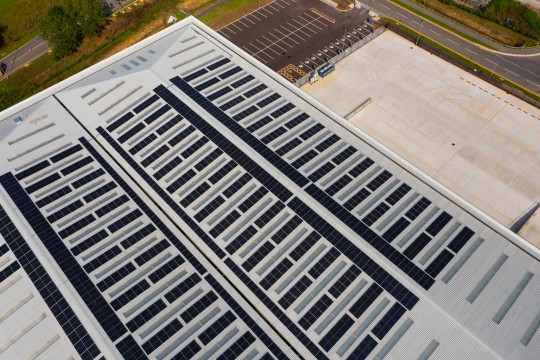
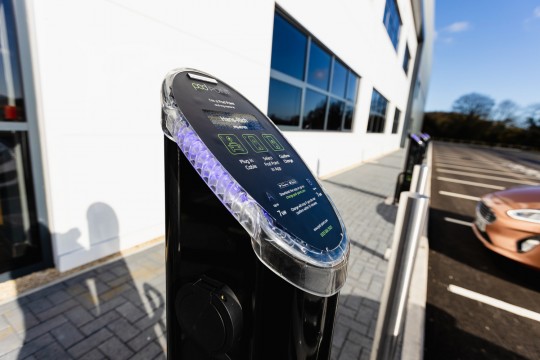
Biodiversity
How will biodiversity be enhanced?
New habitat creation, including native woodland planting, strengthening existing hedgerows, and the addition of species rich grassland and wildflower meadows, will ensure there is a significant net gain in biodiversity on site, well in excess of policy requirements.
Will any trees be removed?
Existing tree and woodland vegetation will be retained and protected wherever feasible, albeit some trees will need to be removed to allow for the site access onto the A449. Any trees removed will be offset through extensive tree planting on site.

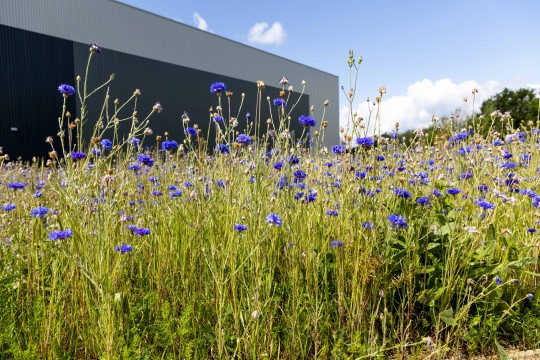
Community Benefits
What community/recreational space is proposed?
Around 2.9 hectares (6.9 acres) of open community and green space is proposed to the south of the site. This could have a variety of uses, including an orchard, food growing wildlife spaces, new pathways and play areas.
Initial feedback supports the idea of a new school drop off car park within this area to help alleviate pressures on School Lane during School drop off/ pick up times.
We are keen to hear local community views on what this space should look like and how it could be used.
How will this development benefit the local area?
We are committed to working with the community to shape the proposals for a new open green space within the southern part of the site, including linkages and opportunities for pupils of St. Leonards C of E School. As noted above, we are keen to hear thoughts and ideas from the local community on how this area could come forward.
Besides the provision of new recreational and amenity space and enhancements to public rights of way, the development will provide a range of socio-economic benefits for the local area, including around 885 new jobs from operation and 140 jobs during construction.
Contrary to popular belief, due to the evolution of the industrial and logistics sector, including increased automation and the use of robotics, the sector supports a range of highly skilled jobs in the engineering and technological professions.
There will also be a range of opportunities for young people, from work experience to apprenticeships. In total, the development is expected to deliver £6.7 million in social value to the local area.
Who will manage the new community space?
We retain sites within our portfolio and will therefore take responsibility for managing, maintaining and monitoring all new green spaces provided within the site, ensuring effective place-keeping into the future.
Drainage
How will the drainage be managed?
Sustainable Drainage Systems (SuDS) will be utilised to hold and control surface water before it enters watercourses. SuDS features will also provide a range of habitats to boost biodiversity.
Rain gardens, permeable paving, and rainwater harvesting, which will be used to flush the toilets in the units or be used for fleet washing, will also be used where possible.
Transport and Access
How will the site be accessed?
The development would be accessed via a new junction onto the A449, approximately 300m south of Junction 13 of the M6.
This will provide safe and efficient access to the nearby M6 motorway.
An improved 3m wide shared footway/cycleway will be created along the eastern edge of the A449 which will ensure a continuous pedestrian and cycle connection between the Site and Stafford to the north. A pedestrian crossing will be provided across the A449 to connect to existing footways enabling a continuous pedestrian connection south towards Penkridge.
Secure and readily accessible cycle shelters will also be included within development plots to encourage active travel.
Furthermore, the site is adjacent to bus stops offering regular services to Cannock, Penkridge, and Stafford.
What will happen to public rights of way which cross the site?
Both the bridleway (known as Dunston 16b) and footpath (Dunston 17) which cross the site will be retained, realigned and enhanced, encouraging access to the countryside to the west of the site.
What will the impact of the development be on local traffic flows?
As part of the planning application, a detailed Transport Assessment will be prepared to assess the impact of the development on the operation of local junctions.
It is expected that the proposed new junction on the A449 and Junction 13 of the M6 would both operate within capacity with the development in place.
As the site is strategically located next to the M6, there will be limited impact on other local roads.
The opportunity to include a new school drop off area/ car park within the site would help to alleviate pressures on School Lane during the peak drop off/ pick up times.